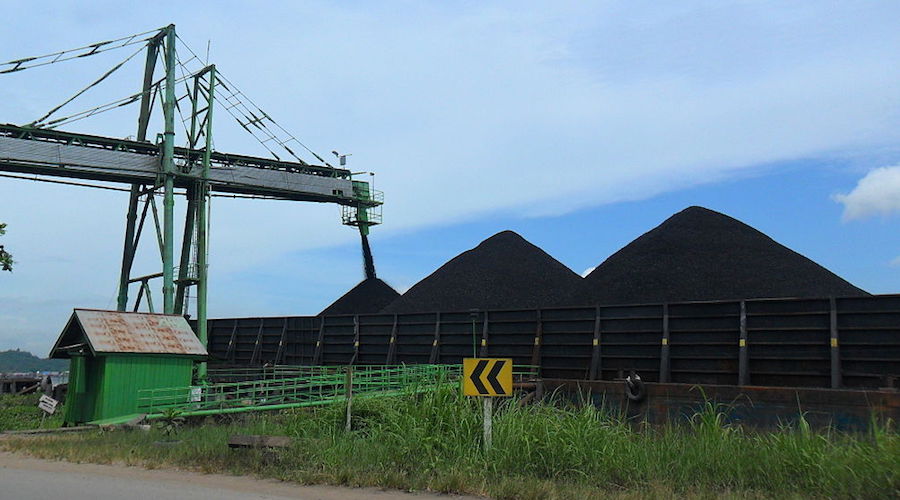
For a long time, the biggest coal importers, China and India, have kept the coal trade fluorishing with a steady flow of cargoes from Australia and Indonesia, mostly.
Steel mills and power plants in the two biggest Asian economies have been fed a steady diet of coal from these two countries, which together comprise about two thirds of the global coal trade.
According to the World Coal Association, in 2015 Indonesia and Australia together exported a respective 410 million tonnes (MT) and 375MT, mostly to Asia. Of the top seven coal importers in 2015, five are Asian; they are, in order, China, India, Japan, South Korea and Chinese Taipei. Number 6 and 7 are Germany and the UK.
Lately, however, India’s status as a major coal importer is starting to wane, and that is having a negative effect on a major supplier: Indonesia.
The country’s push to become more self-sufficient in energy – India wants to double domestic coal production, increase renewable energy five-fold, and reform its energy distribution network – has resulted in a huge increase in domestic coal production, meaning India is not as reliant on imports.
It’s not that India is using less coal; although a mandate to use other, less polluting energy sources is also being pursued.
The country’s push to become more self-sufficient in energy – India wants to double domestic coal production, increase renewable energy five-fold, and reform its energy distribution network – has resulted in a huge increase in domestic coal production, meaning India is not as reliant on imports. The country plans to cease thermal coal imports by 2017 with the exception of a few coastal areas, states the Institute for Energy Economics and Financial Analysis (IEEFA).
According to Reuters:
“State-run Coal India is opening mines at the rate of one a month and expanding existing ones, as Prime Minister Narendra Modi fast-tracks environmental clearances to double output this decade and meet election promises to provide power to a population of 1.3 billion.
That dash for production has left Coal India with a stockpile of more than 50 million tonnes of mined coal, but domestic demand is rising more slowly than anticipated, prompting it to start talks to export to neighbouring Bangladesh.
“This is a threat to the Indonesian coal industry,” said Supriatna Suhala, executive director of the Indonesian Coal Mining Association (ICMA). “In future, we may have to compete with India. They may become an exporter to Asia.”
Part of the problem is that the type of thermal coal that Indonesia exports is of a lower quality than other coal. At today’s low prices, that means that Indian importers can afford the more costly, higher-quality product.
“It’s impacting all the major export markets because now the Indians are not at a loss for choice, and you can see that from month-to-month they just skip around from South Africa to Indonesia,” Reuters quotes Ben Lawson, chief operating officer of Sanaman Coal.
Recent figures showing drops in Indonesian coal exports are startling – and alarming – considering the country relies on coal mining for around 4 percent of GDP. According to a recent report by Freight News, Indonesia’s steam coal exports dropped to a four year low of 366MT, largely due to declining import demand in the key Asian importing nations of China and India. The publication notes that “India’s firm domestic steam coal output contributed to an 8% drop in Indonesia’s steam coal exports to the country, to 123mt. This decline accelerated in early 2016, with Indonesian shipments to India falling 23% y-o-y in January-February.”
Other factors hurting the country’s coal shipments include forest fires in Sumatra which forced producers to suspend output, a crackdown on illegal coal mining, and piracy incidents that suspended shipments from Kalimantan.
Australia, the world’s second largest coal exporter, is also worried about India’s newfound coal independence. According to the IEEFA, Australia may have underestimated the level of growth in Indian domestic coal production, to the point where Australian coal exports to India could become “stranded assets.”
“The OCE’s [Australian Government’s Office of the Chief Economist] failure to fairly review the acceleration of coal dispatches over 2014 and again in 2015 mean the report’s key conclusion of stronger thermal coal imports looks increasingly unrealistic,” said Tim Buckley, Director of Energy Finance Studies at the IEEFA. “This has serious implications because Australian coal mine plus associated rail and port infrastructure expansions are premised on forecasts proving to-date to be entirely wrong, resulting in increased stranded asset risk.”
Comments
Altaf
To a large part the fate of Indonesia is due to its own policies. About 10 years back they started fingering the smoothly ongoing export operations to India. When India issued the licence to build UMPPs (Ultra Mega Power Plants) of the size of 4,000MW worth 4 billion dollars each to private sector, atleast two of them Reliance Power and Tata Power based their model in imported Indonesian coal. Tata even invested in Indonesian cola mines. After the two projects committed finances, Indonesia started changing policy by saying they ban low calorie coal exports. Just imagine the fate of the Power plants after installation, can not get Indonesian coal. Now both are stuck up neck deep in losses as the power plants are not operational for the past 5 years. Alternate coal is expensive and they have sales contracts at lower prices. Tatas have even sold their Indonesian coal mines recently. Basically Indonesian policy killed two of the large Indian corporates, which scared others to venture there. This made India resolve to be self sufficient in coal. Indonesia is suffering due to its own deeds.
Even other mineral policies also similar. Nickel export ban, copper concentrate export ban etc reflect their state of affairs.